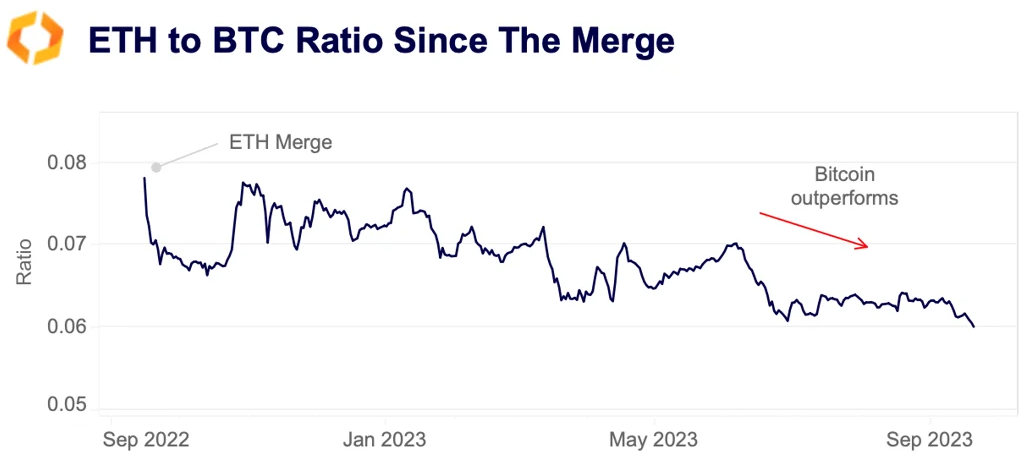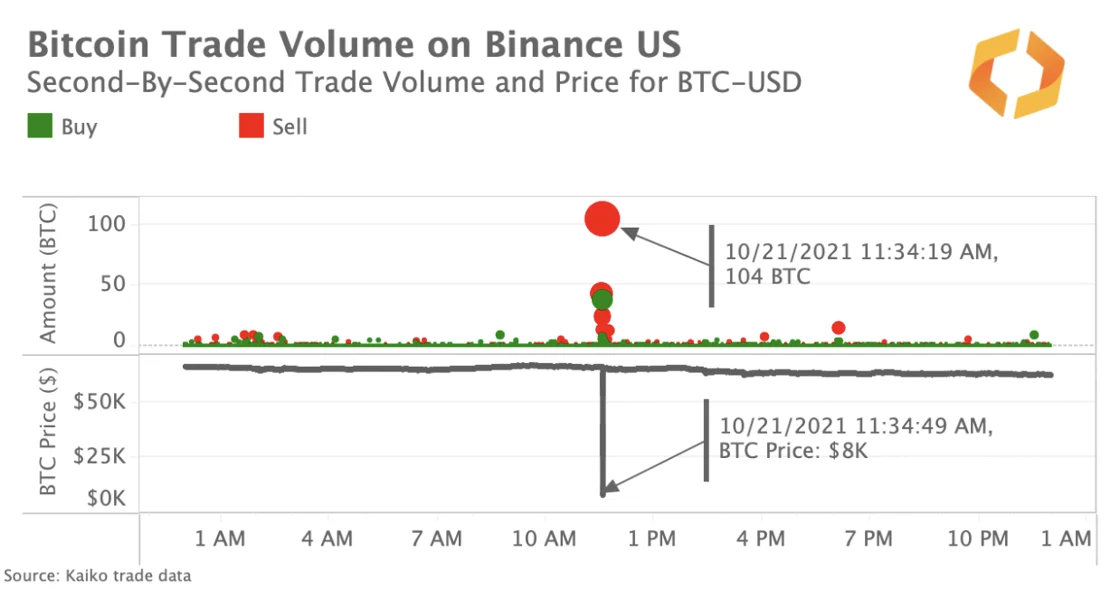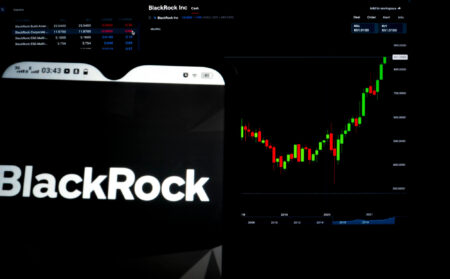A summarizing review of what has been happening at the crypto markets of the past week. A look at trending sectors, liquidity, volatility, spreads and more. The weekly report in cooperation with market data provider Kaiko.
Bitcoin remained range-bound over the past week despite a hawkish Fed meeting that caused equity markets to shudder. Meanwhile, Mt Gox postponed its creditor repayment deadline, Balancer suffered yet another attack and Bybit announced it will suspend its UK services.
ETH one year after the merge
It has now been one year since the Ethereum network successfully completed the Merge, a historic transition from proof-of-work to proof-of-stake much-heralded by the crypto industry. Many expected a strong ETH rally, but has that prediction played out?
At this time last year, the ETH to BTC ratio stood at just under 0.08 after ETH rallied relative to BTC ahead of the Merge. However, since then the ratio has continued to decline, first from 0.08 to 0.07 in the first quarter of 2023, then from 0.07 to 0.06 this summer. The reasons for this are varied, but it may be related to the market’s expectation that the SEC will soon approve a spot BTC ETF, while an ETH ETF is a more distant possibility.

ETH’s slump is further reflected in trade volumes, which have remained lackluster over the past year. The chart below shows the running sum of ETH and combined top 30 altcoin volume. From September 2022 to January 2023 the two volumes were nearly identical. Then, as markets began rallying in January, altcoins began to outpace ETH and the gap has continued to grow ever since. The top 30 altcoins have registered nearly $1.5tn in volume compared to $1tn for ETH in the timeframe shown.

Despite sluggish market activity, Ethereum’s transition has been a nearly unimpeachable success. This is perhaps best shown by the consistent growth in the number of Lido Staked ETH (stETH) holders.

Liquid staking derivatives (LSDs) like stETH give users easy access to ETH staking rewards and have become immensely popular, though there are some concerns that Lido’s growing dominance could be unhealthy for Ethereum moving forward.
Mt Gox extends repayment deadline
Last week, management for the bankrupt Japanese exchange Mt Gox announced it would delay its deadline for creditor repayment by a year to October 31, 2024. The Mt Gox estate currently holds 142,000 BTC, 143,000 BCH and 69bn JPY.
Mt Gox was once the world's largest crypto exchange. At its peak in 2012, the exchange facilitated more than 20mn BTC in transactions. The exchange collapsed in 2014 following one of the biggest hacks in crypto history, but at the time the stolen BTC was worth only a few million dollars. Today, it is worth $23 billion.
Alameda probably caused the Binance.US flash crash
Last week, the mystery around the 2021 bitcoin flash crash on Binance.US was apparently resolved. At the time, Binance.US attributed the crash to a bug in the trading systems of one of their institutional traders but did not reveal the identity of the trader. Last week, a former Alameda employee claimed that the crash was due to an Alameda trader mistakenly selling a large amount of BTC, causing prices to tank instantly from $66k to $8k on Binance.US, with millions in losses.
At the time, the liquidity crunch and extreme volatility on Binance.US rippled throughout other markets, demonstrating how an exchange-specific flash crash is never an isolated event. The crash resulted in an almost complete depletion of market depth on Binance.US and caused a market-wide increase in spreads.
Bitcoin miners continue to outperform
Despite losing some of their July gains, most Bitcoin miners continue to outperform spot BTC and other blockchain-associated companies year-to-date. Riot Platforms — one of the largest BTC miners in Texas — is up by a staggering 197% YTD after earning a record $31mn from power credits in August. Marathon Digital surged by 173% while Hut 8 rose by 145%. Coinbase and Microstrategy have also outperformed spot BTC and are up by around 130% this year, boosted by ETF-related optimism. While the advent of ordinals in February boosted miners’ fee revenue, hash rate and network difficulty have continued to rise, weighing on the industry.











